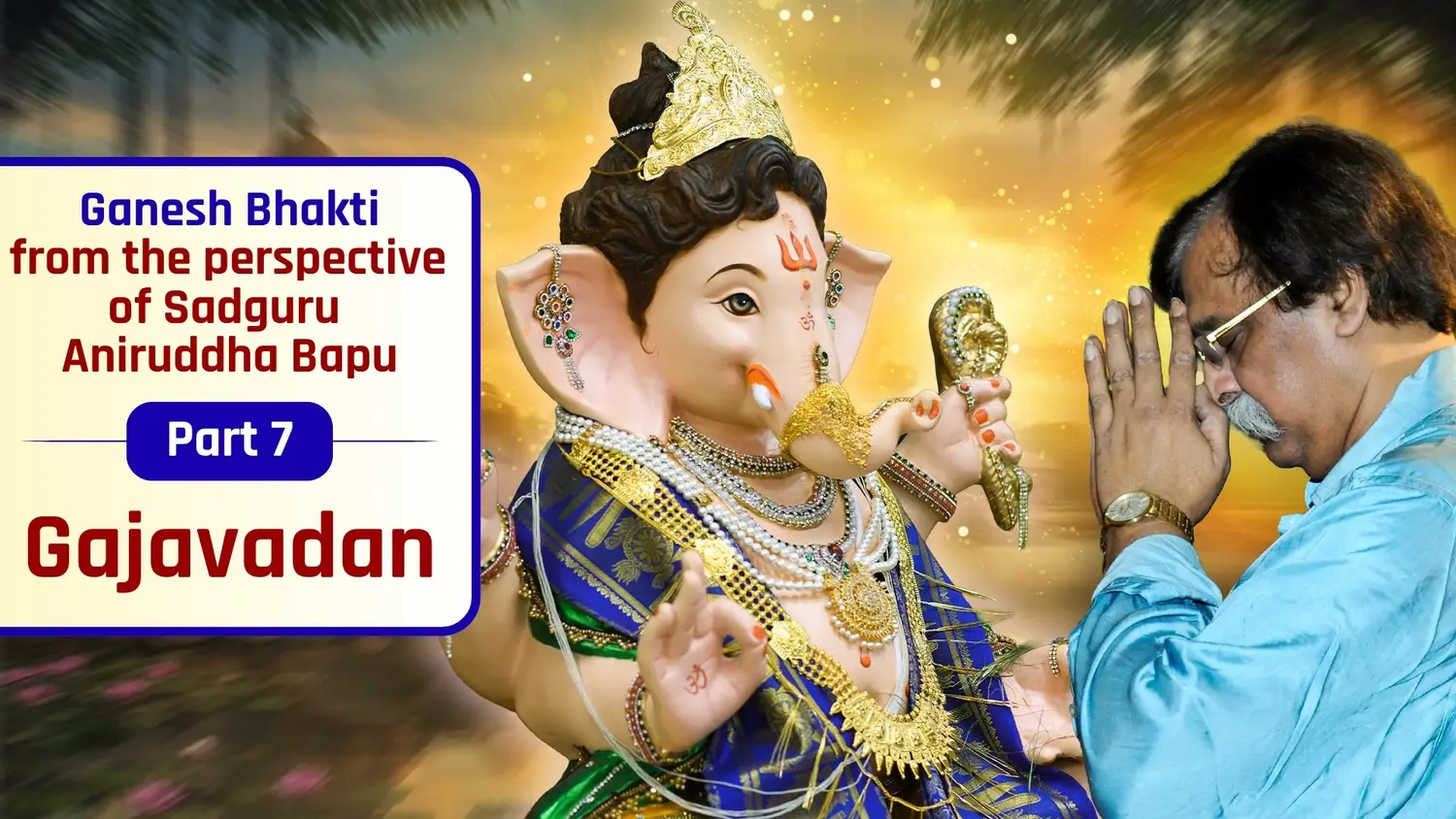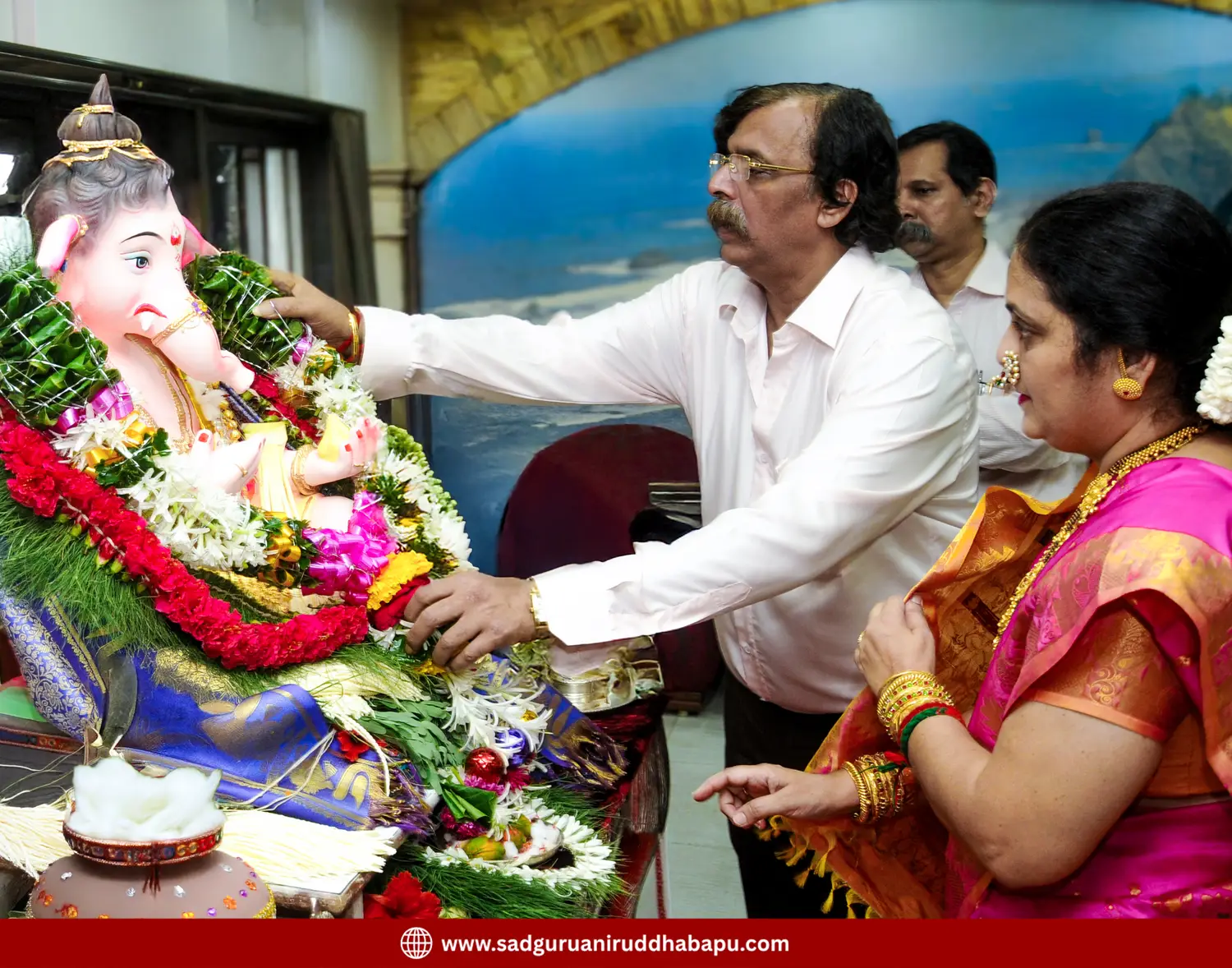Gajavadan

मराठी हिंदी ಕನ್ನಡ తెలుగు தமிழ்
Reference: Sadguru Shree Aniruddha Bapu’s editorial published in Dainik Pratyaksha dated 31-08-2006
Today, we shall look at the second important principle that emerges from the birth story of Shri Ganapati. Shiva is the divine expression of the Paramatma who annihilates impurity. Upon witnessing or hearing of something impure or disgusting, even the most ordinary and uneducated Indian instinctively utters, “Shiva! Shiva!” Without any formal spiritual training, and purely through tradition, every Indian inherently knows that all that is impure and filthy is completely destroyed by Shiva.
Across all regions of India, there exists a deeply rooted belief that if a person who has committed atrocities against a woman performs Abhishek (ritual bathing) or worships Bhagwan Shiva, that person receives immediate and severe punishment for their sin. Not only that, but even the relatives who perform such worship on behalf of such a person are believed to face harsh misfortune. Another widespread belief is that those who abuse children under the age of sixteen are never granted peace, contentment, or good health by Bhagwan Shiva. All of these long-standing traditional beliefs reflect the Paramshiv form of the Paramatma, the one who is ever-vigilant in protecting purity and ever-ready to destroy sin.
How could this protector of purity, Shiva, possibly sever the head of litlle Ganesh, an innocent child? It’s simply not possible! This entire event unfolds not on a physical, but on a supra-mental (transcendental) plane.
The ‘Karpurgaur’ form of Shiva, that is, His purest form as radiant and white as camphor could no longer bear the impure human emotions embedded within the mantras and verses, which had emerged through various sadhanas and forms of worship within the vast web of Māyā (illusion). When the various forms of Upasanas or ritualistic practices like yadnyas and so on accomplished owing to the power of Parvati Mata, the Dravyashakti, began to oppose Shiva, meaning when attempts were made to use the worship of the Paramatma for impure purposes, it was but natural that the Paramshiva Paramatma, rose in anger. In response, He destroyed the Maya-beej (seeds that give rise to illusory powers) that were being used in those mantras and rituals, and in their place, He made it mandatory to begin every mantra used in the worship of the Paramatma with the utterance of "Om" (ॐ)—the Pranava. This very Omkar itself is that Elephant Head which was placed upon the body of the child Ganesh.
Even in the Vedas, the Vinayak ganas are initially described as troublesome and as those who cause obstacles whereas Brahmanaspati, the original form of Ganesha, is referred to in the most sacred and pure form. The contradiction between these two points is, in essence, not a contradiction at all. Rather, the important principle stated here is that Brahmanaspati (Ganapati) without governance is the Vinayaka Gana — that is, mantra-tantra devoid of Omkara, and thus impure.

The historical evolution of the symbol ‘Om’ (ॐ) also helps us understand this concept easily. In the written or inscribed literature found from the pre-Christian era, the Pranava—that is, Omkar—does not appear in the form (ॐ) as we write it today, but rather was engraved in a different form: (![]() ).
).
Even the great saint Dnyaneshwar expressed this idea clearly and simply in the following verse:
"Om namoji aadya, vedapratipadya, Jaya jaya swasamvedya, aatmarupa."
In these words, he explained that Ganesh, in the form of Omkar, is the first manifestation in this universe as sound, and thus, he is Swasamvedya (The one who is aware of and intelligible to Himself completely).
The Shri Ganapati Atharvashirsha represents the ultimate expression, the pinnacle of the explanation of the story of origin of Shri Mahaganapati. The word “tharva”(थर्व) signifies fickleness and confusion, and the “A-tharva Stotra” (अ-थर्व) is what removes that mental turmoil and instability. The Atharvashirsha is thus the ‘head,’ that is, the very pinnacle, of all mantras and that head is none other than Mahaganapati Himself.
This is precisely why Mother Parvati holds such deep affection for Bhagwan Ganapati, and accordingly numerous stories are widely known.
To never empower what is unrighteous, and to strengthen only that which is righteous, is the most essential quality of Omkara, and therefore, no human endeavor can truly be auspicious without first offering salutations to this Gajavadan (elephant-faced), Mangalmurti (ever-auspicious) Mahaganapati.
